For the third time in five years, Native American legislators and supporters of improving Native education in South Dakota have proposed legislation that would allow for creation of state-funded charter schools aimed at immersing students in Lakota Indian language, culture and history.
And once again, the measure has failed in the state House of Representatives, where lawmakers on the education committee on March 2 voted 8-4 to kill Senate Bill 139, which had already been passed by the Senate.
The latest immersion school bill was one manifestation of a larger, expanding effort to improve education of Native students in South Dakota. Several nonprofit groups and coalitions are seeking change at the legislative level and developing new schools and programs at the community level to improve educational outcomes.
Opponents of the latest Lakota Immersion charter school proposal said the bill would have siphoned too much funding away from school districts where the schools would be located and was not well-written in regard to how the charter schools would be funded, governed and managed.
Native American students have traditionally underperformed in South Dakota public schools by wide margins compared with their white peers and other minority groups in the state.
Disparities in performance indicate a clear and consistent ethnic achievement gap, and the COVID-19 pandemic has worsened that gap, according to test scores and other data provided by the State Report Card issued by the Department of Education.
In the 2020-2021 school year, only 14% of Native students were considered proficient in math, compared with 49% of white students. That year, 23% of Native students were proficient in English-language arts, compared with 59% of white students; and in science, only 16% of Native students scored as proficient compared with 48% of white students.
Graduation rates, attendance rates and college/career readiness rates for Native students all lag behind those of their white peers by significant amounts. However, the most telling and worrisome statistic may be the chronic absenteeism rate, which for Native students was 51% in 2020-2021, compared with only 11% for white students. Chronic absenteeism is also tied to poverty, with 32% of economically disadvantaged students chronically absent that year. As evidence of the impacts of the pandemic, Native students saw chronic absenteeism increase to 51% in 2020-21 from 37% in 2018-19, two years before the pandemic.
The prime sponsor of SB 139, Senate Minority Leader Troy Heinert, D-Mission, provided emotional testimony in his defense of the measure and its potential outcomes for Native youth.
Heinert and others say the consistent failure of the existing public school system shows a great need for reform, and notes that significant research and examples from existing immersion schools show that Native achievement levels and graduation rates improve significantly under the cultural and language-immersion model being presented.
“I’m not saying every kid needs this, because we’ve had Native students that have gone through the public schools system and gotten along just fine, but we have many more who have struggled and not been successful,” Heinert said in an interview with News Watch. “As a former teacher, I have seen kids that had plenty of talent, plenty of ability, but the current schools didn’t make any sense to them, and unfortunately, they either dropped out or got into some trouble because we were talking to them in the wrong way.”
Finding a path to academic achievement for non-white students in the U.S. has been a challenge for generations and for members of all minority groups. Many factors, including poverty, play a role in lower success levels for minority students.
But supporters of Lakota Immersion in South Dakota say quantitative and qualitative data support the concept that students perform better and feel more comfortable in settings and with curricula that better reflect their identity, culture and history.
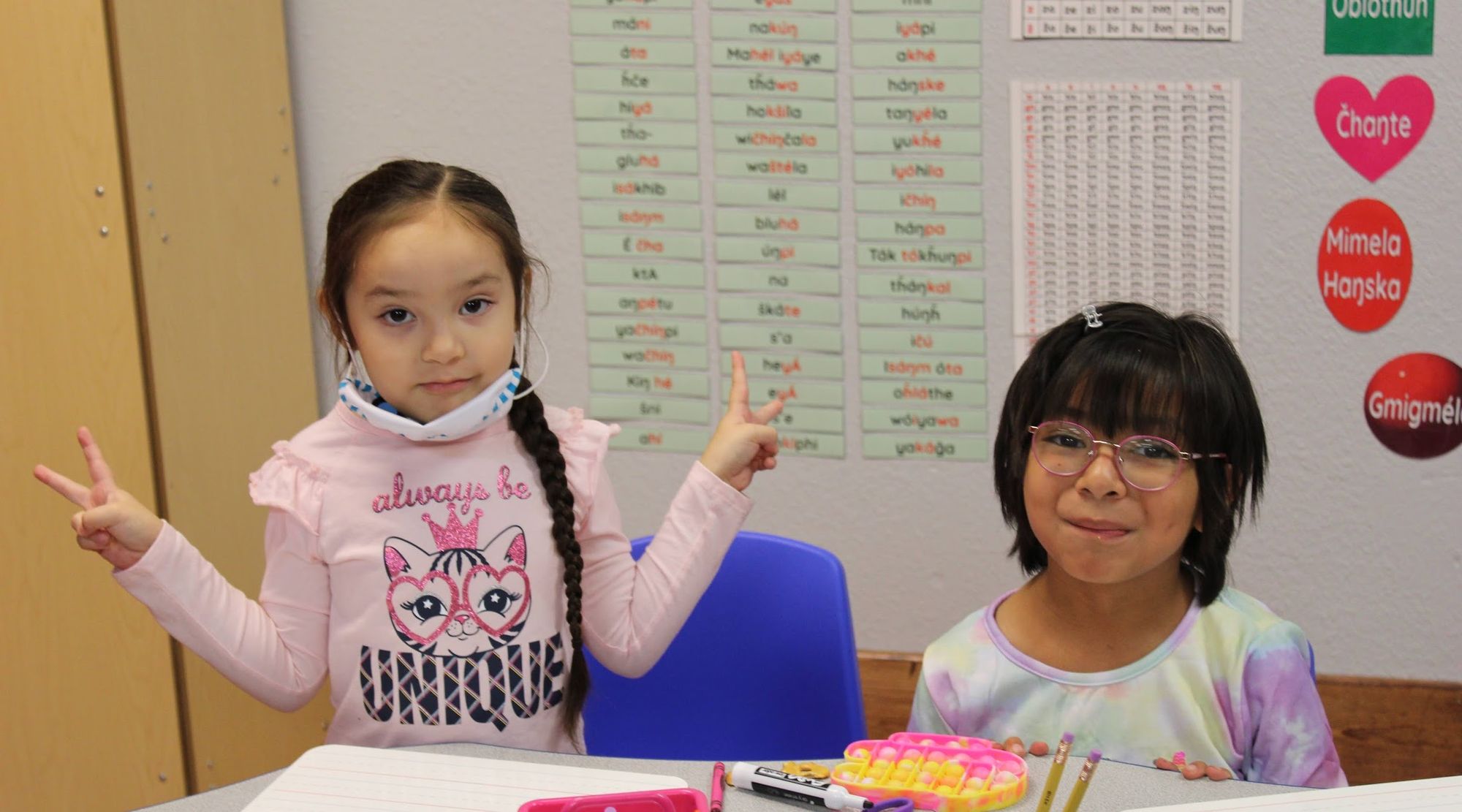
Native immersion schools across the U.S., such as those based on a model developed at the Native American Community Academy in New Mexico, have seen improved graduation rates and academic achievement for Native students.
In a 98-page research study by the American Indian College Fund, supported by the Kellogg Foundation in Michigan, authors found significant evidence of the efficacy of language-immersion education for Native American students.
“A people’s initiative, Native American language immersion encompasses educational practices and social development that lie outside the mainstream language teaching, education and socialization methods of American children,” the report reads. “Native language immersion schools have remarkable benefits: students show impressive educational achievement, participants demonstrate considerable language knowledge gains in relatively short periods of time, programs contribute significantly to family strength, and college students/adult learners are retained as a positive correlate with language and culture learning.”
On a most basic level, backers of immersion charter schools in South Dakota say it is time to give the concept a try, and that Senate Bill 139, not unlike Senate bills proposed in past sessions, would allow for an experiment they believe can be a game changer in regard to Native student achievement and an overall betterment of life and living standards for Native Americans in South Dakota as adults.
While other immersion schools and educational programs exist on reservations in South Dakota, they tend to be nonprofit institutions that rely on donations and grant awards that can be unsteady and susceptible to the vagaries of the larger economy or giving trends.
Supporters of the measure say adequate, consistent funding levels provided by state support are key to the success of immersion schools and their students.
Charter schools are publicly funded, tuition-free schools run independently of traditional local school districts. The schools often focus on improving achievement in underperforming student populations and may place a greater focus on specific teaching methods or subjects not offered in traditional schools.
Most still report to local school boards or other designated authorizing agent, and students typically are held to all state achievement and testing standards.
Opponents of charter schools often argue that they shift per-student funding away from existing public schools and can allow for unorthodox or untested teaching methodologies and curricula.
Charter schools are considered by supporters to be effective because they allow for innovation in teaching methods and also greater flexibility in curriculum development, staffing, scheduling and teaching styles. South Dakota is one of only five states in the nation that do not allow for charter schools; four of those states are in the Great Plains, including South Dakota, Nebraska, North Dakota and Montana (Vermont is the fifth.)
Achievement gap is wide in SD between white and Native American students
The South Dakota public K-12 school system has about 136,000 students in 688 schools. White students are by far the majority population, making up about 72% of the overall student count, with Native Americans the largest minority with about 11% of the overall student count. This chart shows data from the State Report Card 2020-2021 published by the South Dakota Department of Education and is broken down by all students, white students and Native American students.
CATEGORY
STUDENT PROFICIENCY BY SUBJECT
English Language Arts proficiency
All — 53%
White — 59%
Native — 23%
Mathematics proficiency
All — 43%
White — 49%
Native — 14%
Science proficiency
All — 42%
White — 48%
Native — 16%
ATTENDANCE/GRADUATION
Overall attendance rate
All — 88%
White — 94%
Native — 59%
High school completion
All — 90%
White — 94%
Native — 63%
Chronic absenteeism rate
All — 18%
White — 11%
Native — 51%
College/career readiness
All — 57%
White — 65%
Native — 21%
Source: South Dakota Department of Education
Proposed schools based on language, culture
Backers of Lakota-language and cultural immersion schools have proposed similar legislation in three of the past five years, including Senate Bill 139, the bill now under consideration by the Legislature.
The 16-page bill lays out a framework for public school districts to sponsor creation of Lakota Immersion schools in reservation areas. Initially, the bill called for formation of four schools in a five-year test period, but has been amended this session to allow only two schools. In its introduction, the bill sets forth its intent to improve education for Native students in South Dakota.
“The school unites the most important influences in a student’s life, including educational experiences, families, and communities, to create a support network that nurtures the student’s development toward productive adulthood,” the bill reads. The immersion schools would “include a strong core instructional program designed to help each student meet high academic standards; enrichment activities designed to expand each student’s learning opportunities and support cognitive, social, emotional, moral, and physical development; a full range of health and mental health services designed to safeguard each student’s well-being and remove barriers to learning.”
Native American students are the largest minority group in the state public school system. South Dakota has 688 public schools with about 136,000 students, roughly 11% of which are Native and 72% of which are white. The state spends about $1.65 billion a year to fund public schools.
The Senate bill bases its proposed curriculum largely on the Oceti Sakowin Essential Understandings and Standards, a set of state-approved concepts that provides a framework for teaching Native history and culture. The 35-page set of lesson plans and instructional guidelines includes teaching aids in history, culture, language, treaties, identity and way of life of Lakota, Dakota and Nakota Sioux Indians.
However, bills to make teaching of the Oceti standards mandatory in South Dakota public schools failed this session, and use of the standards remains mixed at best in South Dakota schools. A 2021 state survey of more than 700 educators in 125 school districts found that only 45% of educators reported using the Oceti understandings in their schools, and that 9% of educators said their schools did not celebrate Native history or culture in any way.
South Dakotans in general are largely supportive of including Native teachings in public schools. A News Watch poll of 500 registered state voters in October 2021 showed that 88% of respondents were very or somewhat supportive of teaching Native history and culture in South Dakota schools.
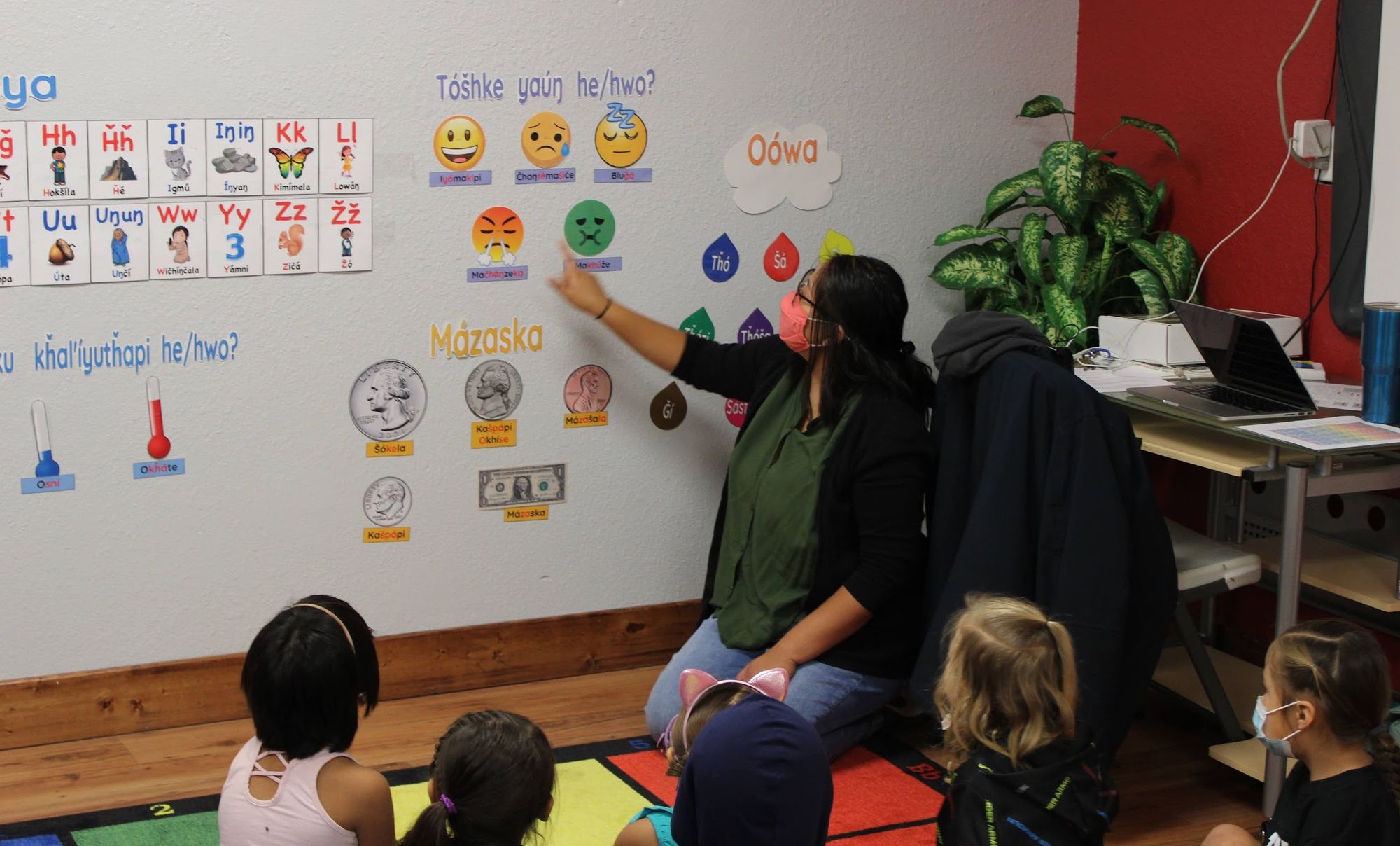
Questions of funding and governance
Opponents of the current Senate bill uniformly stress their support for improving educational achievement for Native students in South Dakota. This year, opponents of SB 139 are making essentially the same arguments as in past years when the immersion charter school concept was proposed.
Opponents this year include the Associated School Boards of South Dakota, the School Administrators of South Dakota, the South Dakota Education Association and a lobbying arm of the largest school districts in the state, including Sioux Falls.
Rob Munson, executive director of the School Administrators of South Dakota, told News Watch that a new law allowing Lakota Immersion schools is not needed because school districts across the state can already open and manage language-immersion schools. As examples, Munson pointed to Sonia Sotomayor Elementary in Sioux Falls, a publicly run and funded K-5 Spanish-language immersion school; and to a Lakota-language immersion class at Canyon Lake Elementary School within the Rapid City Area Schools system.
Munson and other opponents say they support greater attempts to use language immersion as a way to improve education for Native Americans, but are not confident in the funding and governance mechanisms within the proposed legislation.
“We support it [immersion education], but it can be done today, you just need to work within the parameters of your local school board like they’re doing in Sioux Falls and Rapid City,” he said.
Munson also said the bill as written could allow a single school to consume a disproportionate amount of an overall school district’s budget, including state and federal money and any other revenues, such as from fundraising efforts, concession sales at sporting events or grants given to school districts for other specific purposes.
The final section of the bill would require school districts to fund the Lakota Immersion school based on a percentage of how many students are in the school compared with the entire district. Once that ratio is determined, the bill would require the new school to receive “that portion of the total funding received by the district,” which could include monies used for the overhead to run the entire district, not just one school.
“That isn’t a good way to fund a school,” said Wade Pogany, director of the state school boards association. “It doesn’t take into account need, it doesn’t take into account special circumstances of the school, it doesn’t take into account staffing.”
Munson said there are also questions about whether the charter school could legally accept federal funding sent to the sponsoring school district.
“At the end of the day, this is going to be a private school being set up that will take public money to fund it without government oversight,” Munson said. “And yet, the school district that sponsors it is still responsible.”
Opponents also noted that the third version of the bill is very much like the other versions and does not appear to address concerns raised during prior hearings that could have made the legislation stronger and more acceptable to school districts and lawmakers.
“We’re not opposed to Native kids and we’re not opposed to what this bill is doing in many cases,” Pogany said in his Senate testimony. “We’re objecting to the same things we objected to last year … the governance and funding.”
The state education department has not taken a position on SB 139 this session. In response to questions from News Watch on the measure and the achievement gap, Education Secretary Tiffany Sanderson said in an email statement that the state is working with education partners across the state to explore ways to improve Native education:
“The Department of Education is committed to growing achievement for all of our students in South Dakota. In addition to the support we provide schools to strengthen student learning, we collaborate with the Department of Tribal Relations on resources and outreach,” Sanderson wrote. “Through these collaborations, we have elevated the conversations about and support for Native American education. Tribal Relations staff understand Native American culture and government and have direct ties to key tribal decision-makers.”
The DOE is working with school districts to encourage and enhance teaching of the Oceti standards, and has a pilot program called the Wookiye Project in which teachers at five schools will receive training in the use of the Oceti standards.
The office of Gov. Kristi Noem did not return emails seeking comment from News Watch on SB 139 or the Native American achievement gap.
When it comes to the specific criticism of SB 139, Heinert argues that nothing will change, and nothing will improve for Native students, without a new approach, and that to some extent, it is important to open the immersion schools even if all the details aren’t nailed down precisely at the start. Solving any problems that arise, or addressing issues as they reveal themselves, would be a natural part of the development of the schools, he said.
“Nobody is coming forward with any other answers, so at some point we have to try something else,” Heinert said.
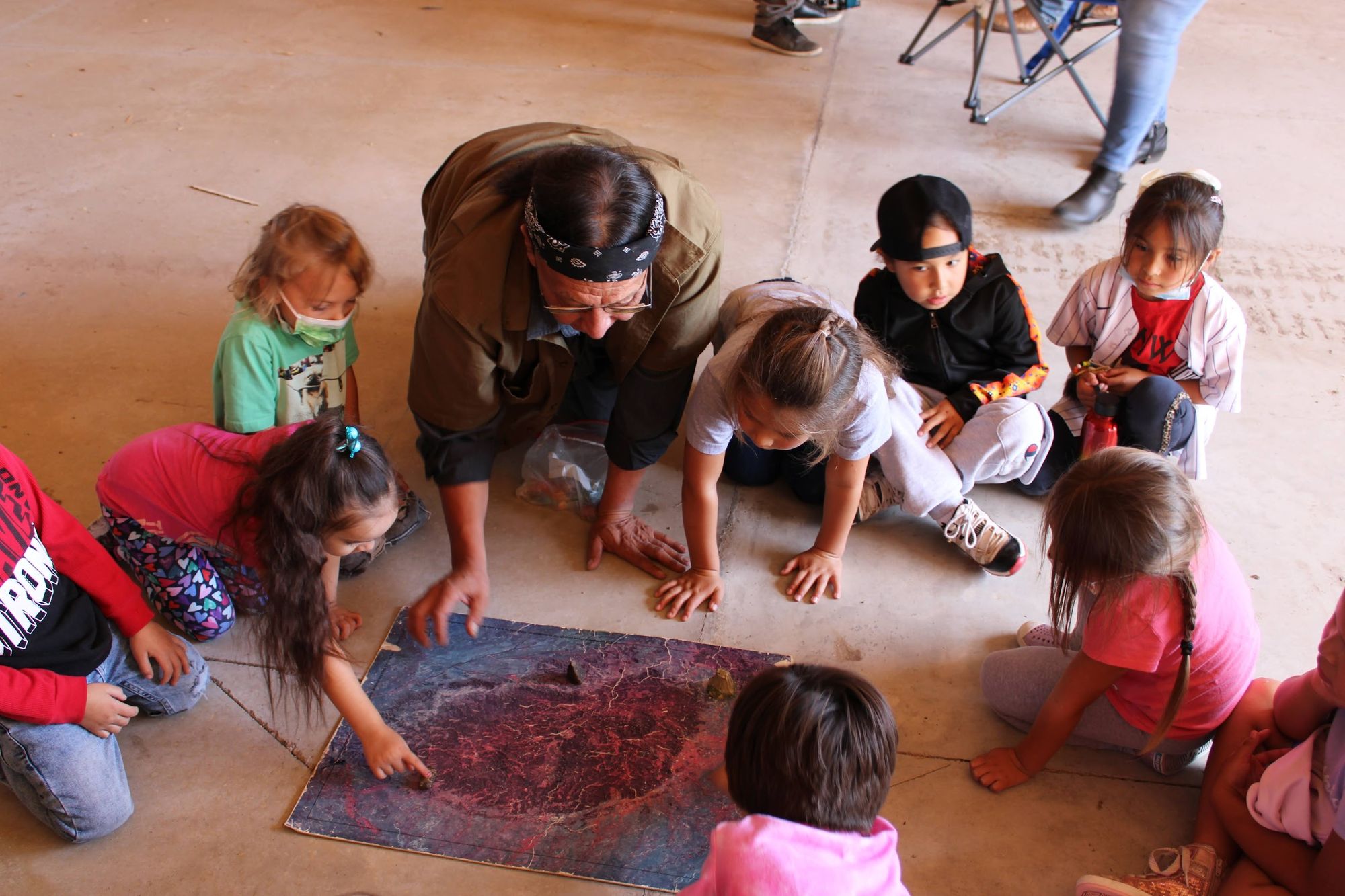
Parents see value in language immersion
Sarah White, a former public school administrator in Rapid City who now serves as director of the South Dakota Educational Equity Coalition, said the state public education system has not accepted adequate responsibility for the long-range lack of success of Native American students. Testing data showing Native students consistently and historically underperform compared with their white peers is clear evidence of systematic failure of the current public school model in South Dakota, she said.
“The output of what the system is imposing yields an undeniable truth that the system was not meant for our students and is not designed for our students’ success,” she said. “We also see a clear and consistent evasion of responsibility for indigenous education in our state.”
As a child, White attended reservation schools where she said her Native identity and culture were omnipresent in classes, on campus and in the community. When she went to college, she found that Native Americans were largely absent from the student population, in adornments on campus and the educational experiences in the classroom. White said she found it much harder to feel welcome and to excel in that academic setting.
White said the eldest of her four children attended traditional public schools in Nebraska and in Rapid City before transferring to a high school run by the Oglala Lakota School District in Pine Ridge.
Her son “fell through the cracks” and did not do well as a minority in majority-white schools, which also tended to have large classes, White said.
Upon admission to the school in Pine Ridge, her son began to flourish, she said.
“For the first time, he said he felt like he could actually be himself in an academic setting, and hearing that broke my heart,” she said. “There’s a combination of factors that contribute to his success, but I believe the biggest metric for achievement was that when he admitted he can finally be himself in that space.”
Several studies have borne out the fact that cultural and language-immersion schools provide more stability and academic success for minority students, including Native Americans.
Many of the positive outcomes are not revealed by standardized test scores, White said.
“The increase in self-esteem, self-confidence, self-efficacy, those are all key points any teacher in those systems would point out,” she said. “If you compared student success data from when the students were in public schools versus results from these institutions that see them and value them and represent them, it is significant.”
Matthew Kull, a non-Native resident of the Belle Fourche area in western South Dakota, testified at the Senate committee hearing that he and his non-Native wife saw great benefits in placing their non-Native son in Lakota Immersion preschool when they lived in Pine Ridge.
Kull said that even though his son was very young — he will turn five this summer — he had picked up strong influences of Native culture during his time at a Native-run daycare on the Pine Ridge Indian Reservation.
“At an early age, my son was blessed to be in a setting where he was able to learn another language while also learning about another culture,” said Kull, who works as an educational consultant. “It’s reflected in his speech patterns, and how he sees the world around him, especially among his ‘animal and plant relatives,’ as he calls them.”
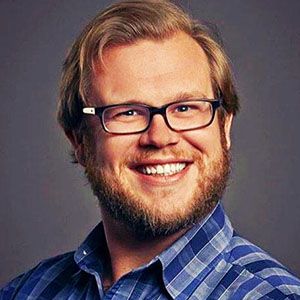
Kull said his son felt a sense of community in his Lakota Immersion school that will be nearly impossible to duplicate when he enters the traditional public school system this year.
“His school was everything a parent could ask for; his teachers were not just teachers, they were his aunties and grandmas, and he refers to them as such. His peers were not just his classmates, they were his brothers and sisters, and he tells me no less than once a seek how much he misses them. He understood Lakota kinship because of his time at that school and he thrived in that space, and as a parent, having left that behind breaks my heart.”
Kull said he ran a workforce-development program while living in Pine Ridge and saw much higher success among Natives who had attended schools with strong Native cultural, language and history teachings compared with those who attended majority white schools.
“Young people who came to our program grounded in their language and culture were too often the minority, but by and large, those were the young people who were secure in their identity and thrived,” he said.
In concluding his Senate committee testimony, Heinert urged lawmakers to be part of a potential solution rather than part of an ongoing problem that is hampering the chances of Native children and adults to be successful.
“We’re kind of hung up on the funding issue, and maybe it is all about the money, though it’s not to us,” he said. “You know where my heart lies, and it’s not going to go away … let’s stop being part of the problem and give these kids and these families a chance. That’s all I’m asking.”
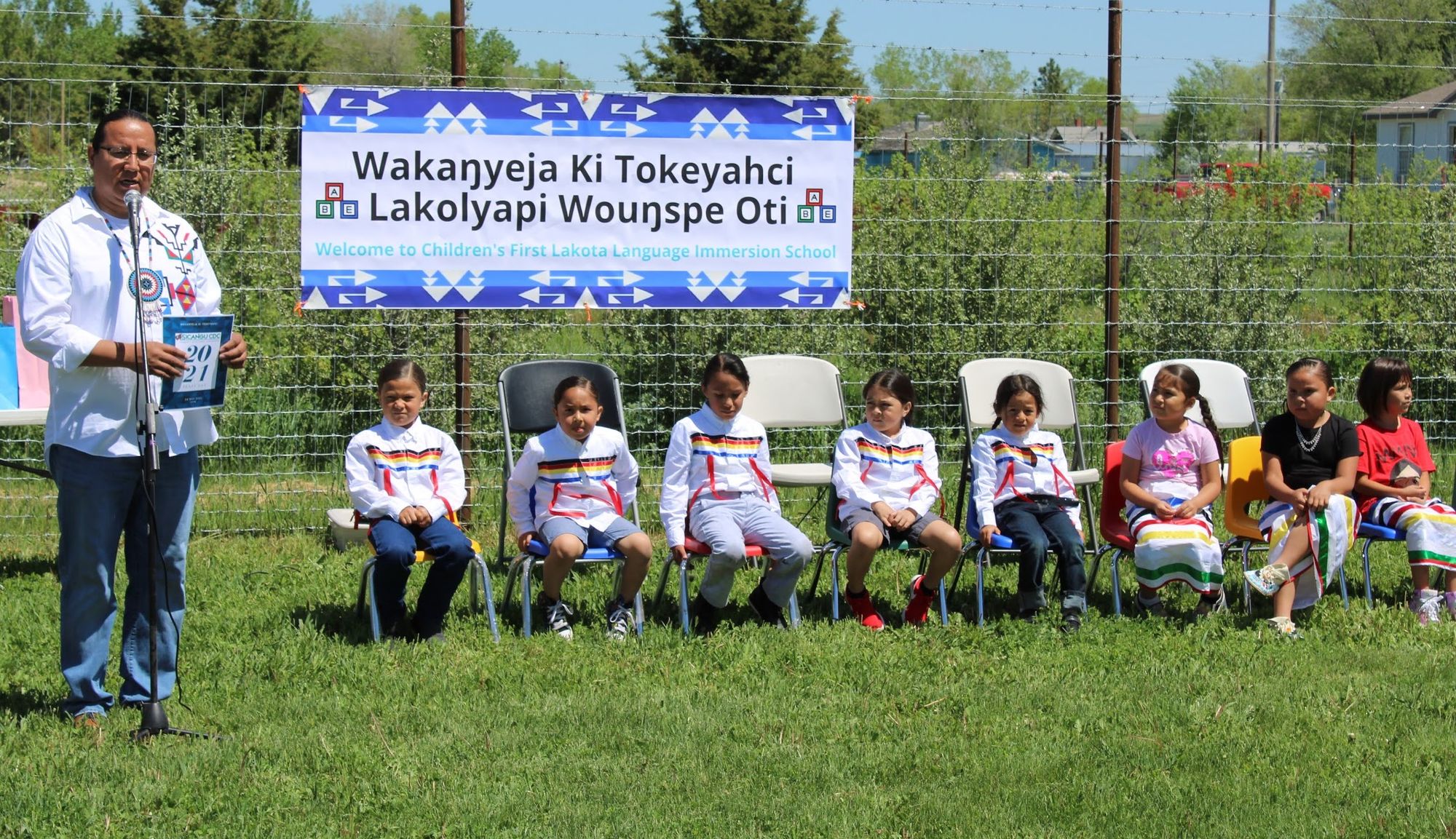
Private immersion school on Rosebud raises hopes for future
One of the state’s privately funded Lakota Immersion programs is located at the Wakanyeja Tokeyahci Elementary School on the Rosebud Indian Reservation. The new school uses facilities at the Boys and Girls Club in Mission to provide “a full understanding of Lakota values and virtues.”
The school opened in fall 2020 under the direction of the Sicangu Education Initiative, with founder Sage Fast Dog stressing the need to teach Lakota language and culture in a way that inspires and challenges indigenous youth.
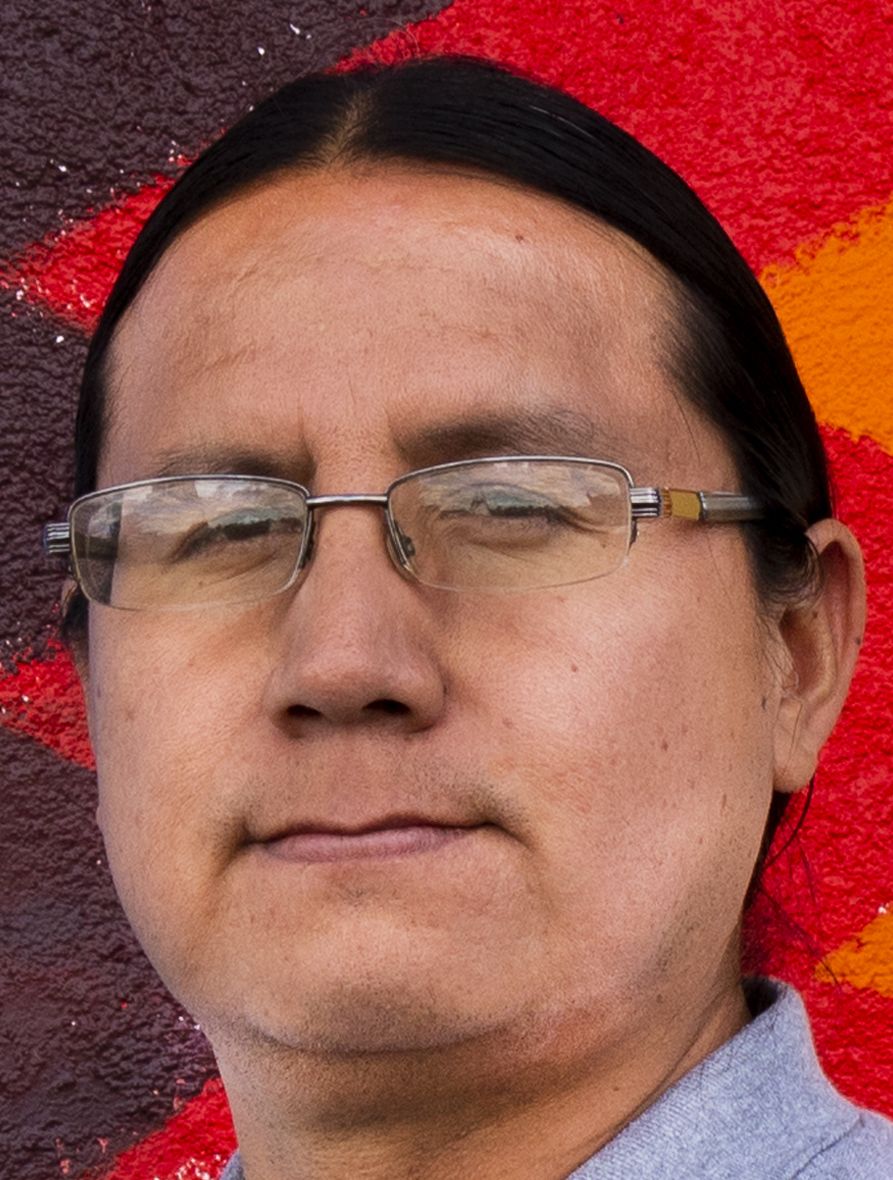
“It’s about being relevant and giving kids an opportunity to make a connection to the content,” said Fast Dog, who grew up on the Rosebud reservation and who also serves on the Todd County School Board. “If you’re serving Lakota children, then your content should reach their background knowledge and recognize who they are.”
There are now 20 students in the Rosebud program, from various reaches of the reservation in south-central South Dakota. The inability to provide transportation for them to reach school each day highlights the primary challenge these educational programs face — sustainability. The Wakanyeja Ki Tokeyahci school is funded by state grants and private donations, making long-term viability a nagging question with limited solutions.
One major goal of SB 139 is to provide a consistent stream of public funding for Oceti Sakowin community-based schools. Fast Dog supports the bill and sees it as a ray of hope for an educational model that stresses family involvement as a means of keeping indigenous students engaged. Parents are asked to reinforce Lakota-language learning at home, and students undergo progress reports every two months and help set their own academic goals.
Family members or elders are also encouraged to participate in class and share stories of Lakota heritage and culture with faculty and students. Student progress is judged by academic preparedness, holistic wellness and leadership, and supporting Lakota-language and culture and indigenous identity.
“Historically, family involvement is transactional,” said Fast Dog. “A parent might sign in that they went to a meeting, but there’s no followup or strategic planning to get insight on how they could get integrated into curriculum to improve academic output. We want to transform the experience so that school culture and classroom culture reflect the students we serve.”
Parents are encouraged to participate in class and share stories of Lakota heritage and culture with faculty and students. Several of the families involved with the Rosebud elementary school had older children who went through the public system are now trying a different approach with cultural concerns in mind. A recent survey found that there were only about 500 fluent Lakota-language speakers living on the Rosebud Reservation, most of whom were over age 65.
‘They really like that there’s a place where the language is taught, but at the same time the kids are learning math and how to read and write,” said Fast Dog.
— Text by South Dakota News Watch reporter Stu Whitney.
Native education panel discussion set for Thursday, March 3, 2022
In the latest segment of its ongoing “South Dakota Matters” series of polls and panel discussions, South Dakota News Watch will host a one-hour online discussion with education experts at 7:30 p.m. Central on Thursday, March 3, 3022.
Click this link to register to watch the panel discussion live, or visit the News Watch Facebook page starting Friday, March 4 to watch a taped version of the event.




